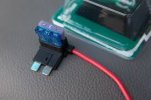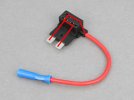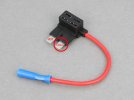I know there many explanations out there, but I'm still confused. I'm about to hardwire my dashcam. I actually need to tap into two fuses because of parking mode. Anyway, I understand each fuse has the IN and OUT. Meaning one terminal has the power and the other does not. Soooooo, using the attached picture, which way am I supposed to plug the Add-A-Circuit in? Is the left prong of the Add-A-Fuse going into the hot terminal, or the right prong? Thanks.
Also, just want to confirm that the blue fuse in that Add-A-Circuit is thee original fuse that you are tapping into?
Also, just want to confirm that the blue fuse in that Add-A-Circuit is thee original fuse that you are tapping into?






